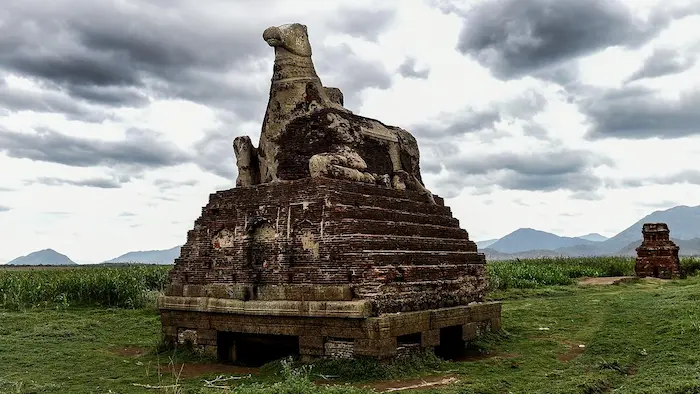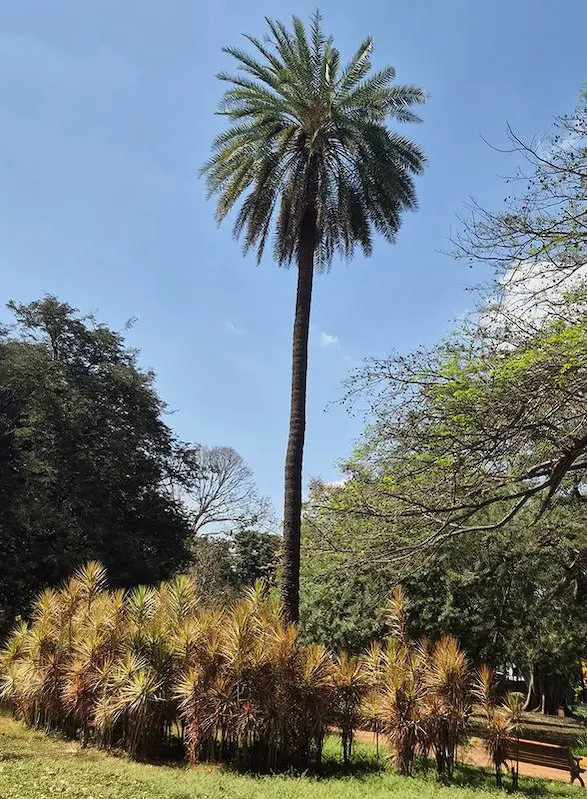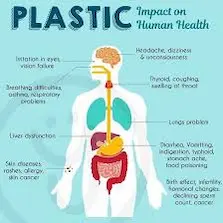1. A Conservation Manual, Drafted by the Ordinary Citizen – History & Culture

Why in News?
Prime Minister Narendra Modi’s Independence Day addresses often emphasize honoring freedom fighters and India’s heritage. However, critics argue these reminders remain symbolic, with little concrete focus on citizen-driven, community-inclusive conservation. This opens a larger debate on how India approaches heritage preservation.
Key Takeaways
- Colonial Legacies in Conservation
- India’s conservation policies are still shaped by John Marshall’s 1923 Conservation Manual, written under British rule.
- Colonial conservation aimed at administrative control and tourist display, not community ownership.
- The Archaeological Survey of India (ASI) still largely follows this outdated framework.
- Need for Community Engagement
- Monuments should not be isolated relics; they should improve local livelihoods and foster cultural identity.
- Spaces can become centers of community resilience and cultural dialogue.
- Example: Local festivals, crafts, and performances linked to heritage sites can sustain both culture and economy.
- Conservation as “Translation”
- Just as language evolves in translation, conservation must allow adaptation and transparency.
- Preservation should acknowledge changing cultural meanings and contexts, not “freeze” monuments in the past.
- Ecological & Interdisciplinary Insights
- Heritage sites exist in ecosystems: forests, rivers, urban settlements.
- Interdisciplinary approaches (wildlife biology, economics, urban ecology) can inform holistic conservation.
- Example: Managing monuments within sustainable tourism and climate resilience frameworks.
- Gandhian Approach
- Gandhi emphasized local participation, simplicity, and community ownership.
- Heritage conservation must shift from state-centric control to citizen-driven responsibility.
Conclusion
India must move beyond colonial-era conservation and adopt a living, inclusive vision of heritage. By integrating citizens, local knowledge, and ecological insights, monuments can transform into dynamic cultural commons, enriching both culture and communities.
Exam Connect – Possible Questions
Prelims
1. Who among the following is credited with drafting the Conservation Manual (1923), which continues to influence conservation practices in India?
A. Alexander Cunningham
B. John Marshall
C. Mortimer Wheeler
D. James Prinsep
Answer: B. John Marshall
2. The Archaeological Survey of India (ASI) was established in:
A. 1784 by William Jones
B. 1861 by Alexander Cunningham
C.1923 by John Marshall
D.1951 by B.B. Lal
Answer: B. 1861 by Alexander Cunningham
Mains
1.“India’s heritage conservation policies continue to be shaped by colonial legacies.” Discuss with reference to the role of the Archaeological Survey of India (ASI) and the need for community participation.
2. Examine the significance of integrating ecological and Gandhian perspectives into India’s heritage conservation. How can community participation make conservation a living dialogue between culture and people?
2. Discovery of New Palm Species ‘Phoenix roxburghii’ – Environment

Why in News?
- A new palm species named Phoenix roxburghii has been confirmed as a distinct species.
- Interestingly, it was first described in the 17th-century botanical text Hortus Malabaricus.
- The species is named after William Roxburgh, often regarded as the Father of Indian Botany.
Key Features of Phoenix roxburghii
- Height: Grows 12–16 metres, taller than the closely related Phoenix sylvestris (wild date palm).
- Trunk: Solitary, tall trunk.
- Leaves: Larger leaves and leaflets than other Phoenix species.
- Flowers: Staminate (male) flowers with a musty scent.
- Fruits: Large, obovoid, orange-yellow fruits.
- Distribution:
- India’s eastern coast
- Gujarat & Rajasthan
- Bangladesh and Pakistan
Back2Basics: India’s Oil Palm Scenario
National Mission on Edible Oils – Oil Palm (NMEO-OP, 2021)
A Centrally Sponsored Scheme to reduce India’s import dependency in palm oil.
- Targets:
- Expand cultivation area to 10 lakh hectares by 2025–26.
- Boost crude palm oil production from 0.27 lakh tonnes (2019–20) → 11.2 lakh tonnes (2025–26) → 28 lakh tonnes (2029–30).
- Support Measures:
- Viability Price (VP) to safeguard farmers against price volatility.
- DBT subsidies (₹29,000/ha).
- Special assistance for Northeast & Andaman Nicobar regions.
- Cultivation States:
- Andhra Pradesh, Telangana, Kerala = 98% of output.
- Others: Karnataka, Tamil Nadu, Odisha, Gujarat, Northeast states.
- Current vs Potential:
- Current area = 3.7 lakh hectares
- Potential = 28 lakh hectares
- Import Dependency:
- India = world’s largest palm oil importer (9.2 million tonnes in 2023–24).
- Palm oil = 60% of India’s edible oil imports.
- Main suppliers: Indonesia, Malaysia, Thailand.
Exam Connect – Possible Questions
Prelims
1. The recently identified palm species Phoenix roxburghii is distinct from Phoenix sylvestris because:
1. It grows taller (12–16 metres).
2. It has musty-scented staminate flowers.
3. It produces small, dark purple fruits.
Which of the above are correct?
A. 1 and 2 only
B. 2 and 3 only
C. 1 and 3 only
D. 1, 2, and 3
Answer: A. 1 and 2 only
2. Consider the following statements regarding the National Mission on Edible Oils – Oil Palm (NMEO-OP):
1. It aims to increase crude palm oil production to 28 lakh tonnes by 2029–30.
2. Andhra Pradesh, Telangana, and Kerala account for nearly 98% of India’s palm oil output.
3. India is the world’s second-largest importer of palm oil after China.
Which of the above statements is/are correct?
1. 1 and 2 only
2. 2 and 3 only
3. 1 and 3 only
4. 1, 2, and 3
Answer: A. 1 and 2 only
Mains
1. “The discovery of new plant species highlights the importance of biodiversity documentation in India.” Discuss the significance of such discoveries with reference to Phoenix roxburghii and their role in ecological as well as cultural contexts.
2. India is the world’s largest importer of palm oil, yet it has significant untapped potential for domestic cultivation. Critically analyze the National Mission on Edible Oils – Oil Palm (NMEO-OP) in light of environmental sustainability and economic security.
3. The Impact of Plastic Pollution on Health – Environment

Why in News?
- Recent UN negotiations in Geneva involving 180 countries failed to reach a binding global treaty on plastic pollution.
- The stalemate reflects sharp divisions between countries focusing only on waste management versus those advocating for production-level restrictions.
- A crucial missing element is the health dimension of plastic pollution, which is now being recognized as a serious human health crisis.
Key Takeaways
- Plastic pollution is not just an environmental issue but a health hazard.
- Plastics contain over 16,000 chemicals, many poorly understood.
- Microplastics have been detected in human blood, breast milk, placenta, and bone marrow.
- Chemicals such as bisphenols and phthalates are linked to:
- Thyroid dysfunction
- Hypertension
- Certain cancers
- Ongoing global studies (1.1 million participants) are investigating long-term health impacts.
Global Plastic Treaty – The Deadlock
- Group 1 (Waste Management Focus): Countries emphasizing recycling, collection, and disposal.
- Group 2 (Production Restrictions): Countries calling for curbs on production and phasing out toxic plastics.
- Developing nations: Seek financial and technological support from developed countries.
Outcome: No consensus → health risks sidelined in negotiations.
Health Risks of Plastic Pollution
- Chemical Exposure
- Endocrine disruptors (e.g., BPA, phthalates) → hormonal imbalance, reproductive disorders.
- Carcinogens → increased cancer risk.
- Hypertension & cardiovascular issues linked to prolonged exposure.
- Microplastics in Humans
- Size: <5 mm (nanoplastics even smaller).
- Found in blood, lungs, placenta, breast milk, and bone marrow.
- Potential risks: inflammation, cellular damage, disruption of immunity.
- Indirect Impacts
- Bioaccumulation in food chains (fish, salt, crops irrigated with contaminated water).
- Mental health stress in communities exposed to toxic waste environments.
India’s Policy Response
- Plastic Waste Management Rules (2016, amended 2022): Restrictions on single-use plastics.
- Extended Producer Responsibility (EPR): Mandating industries to manage post-consumer plastic waste.
- Challenges:
- Weak enforcement at local levels.
- Focus is still on waste management, not health effects.
Conclusion
- Plastic pollution has shifted from being a waste management challenge to a global health crisis.
- Without a comprehensive treaty covering both production and health impacts, policies will remain incomplete.
- Integrating scientific evidence, international cooperation, and public health priorities is crucial for the 21st century.
Exam Connect – Possible Questions
Prelims
1. Microplastics, often in the news, are defined as plastic particles:
A. Smaller than 5 cm
B. Smaller than 5 mm
C. Smaller than 1 mm
D. Smaller than 1 nanometer
Answer: B. Smaller than 5 mm
2. Which of the following health issues have been linked to chemical exposure from plastics?
1. Thyroid dysfunction
2. Hypertension
3. Certain cancers
A. 1 and 2 only
B. 2 and 3 only
C. 1 and 3 only
D. 1, 2, and 3
Answer: D. 1, 2, and 3
Mains
1. “Plastic pollution is not only an ecological crisis but also a public health emergency.” Examine this statement in light of recent scientific evidence and global policy deadlocks.
2. Evaluate India’s approach to plastic pollution management. Should India move beyond waste management and formally recognize the health hazards of plastics in its policies? Suggest a holistic framework.
4. SWAYAM Portal: Free AI Courses by the Ministry of Education – Governance

Why in News?
- The Ministry of Education has launched new free Artificial Intelligence (AI) courses on the SWAYAM Portal to equip students with future-ready digital skills, addressing the rising industry demand for AI professionals.
Key Takeaways
- SWAYAM = Study Webs of Active–Learning for Young Aspiring Minds.
- Launched in 2017 as India’s own Massive Open Online Course (MOOCs) platform.
- Goal: Bridge the digital divide and provide quality online education to students across the country.
- Courses: Cover Class 9 to Postgraduate level, across disciplines.
- Free access; nominal fee only for certification.
SWAYAM Course Structure
- Video Lectures – recorded by subject experts.
- Downloadable Reading Materials – supplementary resources.
- Self-Assessment Tests – quizzes, assignments.
- Discussion Forums – peer and faculty interaction.
Learners can earn certificates through proctored exams, and grades may be transferred to academic records (credit transfer).
National Coordinators
- Courses are developed/curated by 11 national coordinators, including:
- AICTE – Technical & Engineering courses
- NPTEL – Engineering & Technology
- UGC – Non-technical higher education
- CEC – Undergrad courses
- NCERT, NIOS – School-level courses
- IGNOU – Distance education courses
- IIMB – Management courses
- NITTTR – Teacher education
SWAYAM Plus Platform
- New extension of SWAYAM.
- Offers industry-collaborated, job-oriented courses.
- Sectors: Engineering, Healthcare, Hospitality, Business.
- Features:
- Multilingual content
- AI-enabled personalized learning guidance
- Employability-focused certifications
Significance
- Democratizes access to quality higher education.
- Promotes digital inclusion and supports the Digital India initiative.
- Prepares students for Industry 4.0 skills (AI, ML, Big Data).
- Enhances lifelong learning and upskilling opportunities.
- Addresses NEP 2020 goals: Equity, access, multidisciplinary & flexible education pathways.
Exam Connect – Possible Questions
Prelims
1. SWAYAM Portal, recently in news, is associated with:
A. Free healthcare services for women
B. Online education and MOOCs
C. Agricultural subsidy delivery
D. Women entrepreneurship support
Answer: B. Online education and MOOCs
2. Which of the following organizations act as National Coordinators for SWAYAM?
1. AICTE
2. NPTEL
3. UGC
4. IGNOU
Select the correct answer:
A. 1 and 2 only
B. 3 and 4 only
C. 1, 2 and 3 only
D. 1, 2, 3 and 4
Answer: D. 1, 2, 3 and 4
Mains
1. “Digital initiatives like SWAYAM are crucial in democratizing access to quality education in India.” Examine the role of SWAYAM in reducing the digital divide and enhancing educational outcomes.
2. Discuss the significance of SWAYAM Plus in aligning India’s higher education with industry skill demands. How can it contribute to employability and the goals of NEP 2020?
5. India’s S&P Upgrade: Drivers and the Road Ahead – Economy

Why in News?
- S&P Global Ratings has upgraded India’s sovereign rating from BBB- to BBB.
- This is India’s first upgrade in nearly two decades, reflecting improved economic stability and reforms.
- The move has significant implications for investor confidence, borrowing costs, and India’s global credibility.
Key Takeaways
- India’s creditworthiness has improved in the eyes of global investors.
- The upgrade will lower borrowing costs for the government and corporates.
- It strengthens India’s access to global capital markets.
- The government has been actively pushing for better ratings as recognition of reforms.
About S&P Global
- S&P Global Ratings → one of the “Big Three” international rating agencies (with Moody’s and Fitch).
- Provides independent assessments of governments’ and corporations’ ability to meet debt obligations.
Importance of Sovereign Credit Ratings
- Reflect a nation’s ability and willingness to repay external debt.
- Impact:
- Borrowing Costs: Higher ratings = lower interest rates.
- Investor Confidence: Attracts FDI & portfolio flows.
- Global Standing: Recognition of macroeconomic stability.
Why Did India Get an Upgrade?
- Fiscal Consolidation
- Fiscal deficit reduced from 9.2% of GDP (2020–21) → projected 4.4% by 2025–26.
- Stronger fiscal discipline = lower default risk.
- Inflation Management
- Headline inflation dropped to 1.55% (July 2025).
- Price stability boosts global investor confidence.
- Economic Reforms
- GST rationalization, digital tax reforms, infrastructure investments.
- Strengthening of public sector banks and bankruptcy resolution under IBC.
- High Growth Prospects
- India remains the fastest-growing major economy.
- Driven by domestic demand, digitalization, manufacturing push (Make in India, PLI).
Global Comparison
- India’s new BBB rating places it in the same category as Greece and Mexico.
- Still below A-rated economies (e.g., South Korea, Japan, EU members).
- Shows progress, but indicates that India must address structural challenges.
Challenges Ahead
- Structural Fiscal Deficit → High subsidies, welfare spending, and interest payments limit fiscal space.
- Debt Burden → General government debt ~ 82% of GDP (well above emerging market peers).
- Banking Sector Risks → NPAs, credit flow to MSMEs remain areas of concern.
- Geopolitical Risks → Dependence on oil imports, global volatility.
- Social Infrastructure Gap → Education, healthcare investments still below global benchmarks.
Significance of the Upgrade
- Immediate Benefits:
- Cheaper government borrowing → fiscal relief.
- Stronger rupee → lower import costs.
- Boost to foreign investment inflows.
- Long-term Benefits:
- Builds case for India’s aspiration to join the A-rated economies club.
- Reinforces India’s role in global supply chains and as an attractive investment hub.
Exam Connect – Possible Questions
Prelims
1. Which of the following credit rating agencies are considered the “Big Three”?
1. S&P Global Ratings
2. CRISIL
3. Moody’s
4. Fitch
A. 1, 2, and 3 only
B. 1, 3, and 4 only
C. 2, 3, and 4 only
D. 1, 2, 3, and 4
Answer: B. 1, 3, and 4 only
2. India’s recent sovereign rating upgrade by S&P Global was based primarily on:
A. High foreign exchange reserves only
B. Decline in fiscal deficit and inflation management
C. India’s membership in BRICS+
D. Introduction of GST alone
Answer: B. Decline in fiscal deficit and inflation management
Mains
1. “India’s S&P credit rating upgrade reflects improved macroeconomic stability, but structural fiscal challenges remain.”
Discuss the drivers of this upgrade and the reforms India needs for further rating improvement.
2. Evaluate the significance of sovereign credit ratings for India’s economy. How do they impact fiscal policy, investment flows, and global positioning?
6. India to Launch First Sustainable Aviation Fuel (SAF) Plant – Environment

Why in News?
- Indian Oil Corporation (IOC) will begin commercial production of Sustainable Aviation Fuel (SAF) at its Panipat refinery by December 2025.
- The refinery is certified to produce SAF from used cooking oil (UCO).
- IOC aims for an annual production capacity of 35,000 tonnes, sourcing waste oil from hotels, restaurants, and food companies.
- This is a landmark in India’s green aviation initiative to cut emissions and reduce dependence on fossil jet fuels.
Key Takeaways
- Capacity: 35,000 tonnes/year of SAF by 2025.
- Feedstock: Used cooking oil (UCO), with future expansion to alcohol-to-jet (ATJ) technology.
- Objective: Support India’s 1% SAF blending target (2027) for international flights.
- Global Buyers: European airlines expected to be major customers, boosting export potential.
What is Sustainable Aviation Fuel (SAF)?
- A bio-based jet fuel alternative, derived from renewable feedstocks:
- Used cooking oil (UCO)
- Agricultural residues
- Non-edible crops
- Emerging tech: Alcohol-to-jet (ATJ), Fischer–Tropsch pathways
- “Drop-in fuel” → Can be blended with conventional jet fuel (up to 50%) and used in existing aircraft without modifications.
- Certification: International aviation bodies regulate blending limits to ensure performance and safety.
Environmental & Economic Benefits
- Climate Gains
- SAF can reduce GHG emissions by up to 94% (depending on feedstock & technology).
- Helps meet global emission offset rules (CORSIA – Carbon Offsetting and Reduction Scheme for International Aviation).
- Economic Opportunities
- Market creation for farmers (non-edible crops).
- Employment for waste collectors through UCO aggregation.
- Potential to make India a SAF exporter, especially to Europe.
- Energy Security
- Reduces reliance on imported aviation turbine fuel.
- Promotes circular economy via waste-to-fuel transformation.
India’s SAF Roadmap
- National Biofuel Coordination Committee (NBCC) target:
- 1% blending in international flights by 2027.
- 2% blending by 2028.
- Domestic SAF blending expected after international compliance targets.
- Regulation: Airlines must offset emissions beyond 2020 levels (as per ICAO, effective 2027).
- Challenge:
- UCO collection from small eateries is difficult.
- High production costs vs fossil jet fuel.
- Need for scaling advanced technologies like ATJ.
Exam Connect – Possible Questions
Prelims
1. Sustainable Aviation Fuel (SAF), recently in news, is:
A. A hydrogen-based fuel for space vehicles.
B. A bio-based alternative to conventional jet fuel, usable in existing aircraft.
C. A synthetic fuel used only in military aircraft.
D. A fuel made from blending LPG with aviation kerosene.
Answer: B. A bio-based alternative to conventional jet fuel, usable in existing aircraft.
2. Consider the following statements about India’s SAF initiative:
1. The IOC Panipat refinery will be India’s first commercial SAF plant.
2. SAF can be blended with conventional jet fuel without modifying aircraft engines.
3. The National Biofuel Coordination Committee has set a 5% SAF blending target by 2027.
Which of the above statements is/are correct?
A. 1 and 2 only
B. 2 and 3 only
C. 1 and 3 only
D. 1, 2, and 3
Answer: A. 1 and 2 only
Mains
1. “Sustainable Aviation Fuel (SAF) represents both a climate solution and an economic opportunity for India.” Discuss the environmental and economic implications of India’s SAF initiatives.
2. Evaluate the challenges in scaling Sustainable Aviation Fuel (SAF) production in India. Suggest measures to overcome barriers to collection, cost, and technology adoption.

